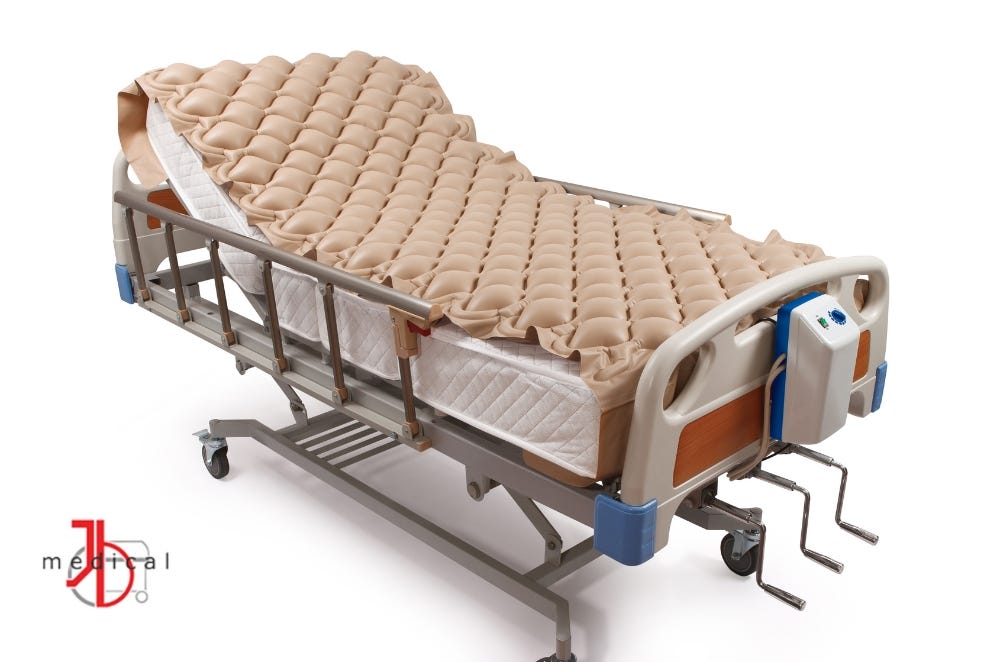Choosing the right pressure-relieving mattress for elderly residents is crucial for ensuring their comfort, health, and well-being. With many options available on the market, considering several factors before making a decision is vital. This guide will delve into key considerations to help you make an informed choice.
Pressure Redistribution One of the main factors to evaluate when choosing a pressure-relieving mattress is its ability to effectively redistribute pressure. Elderly individuals often face the risk of pressure sores and skin breakdown due to prolonged immobility. A mattress with excellent pressure redistribution properties is essential as it can alleviate pressure points, significantly reducing the likelihood of these debilitating complications.
Additionally, investing in such a mattress ensures the comfort and well-being of elderly individuals, promoting better overall health outcomes and enhancing their quality of life.
Materials and Construction The comfort and support of a mattress largely depend on its materials and construction. It’s recommended to choose pressure care mattresses made from high-quality materials like foam, gel, or air chambers for elderly care. These materials are designed to provide superior support and adaptability to the body’s shape.
Choosing these materials ensures your mattress provides adequate support, maintains proper alignment, and minimizes discomfort from pressure points. Investing in a mattress made from quality materials guarantees a peaceful sleep experience and long-term durability.
Firmness Levels The firmness of the mattress is another critical factor to consider as it directly impacts comfort and support. While some may prefer a firmer mattress for added support, others might find a softer mattress more comfortable. Balancing support and comfort is crucial for ensuring a restful night without sacrificing pressure relief.
Size and Dimensions When selecting a pressure-relieving mattress for elderly residents, it’s essential to consider the size and dimensions that effectively meet their needs. This includes ensuring the mattress fits snugly within the bed frame and leaves ample space for comfortable movement.
Furthermore, considering the height of the mattress is also crucial; opting for a lower height can make it easier for elderly individuals to get in and out of bed, thus promoting independence and accessibility. Carefully considering these factors allows caregivers to choose a mattress that optimizes comfort and functionality for elderly users, thereby improving their overall well-being and quality of life.
Waterproof and Breathable Covers Waterproof and breathable covers are essential for maintaining hygiene and preventing moisture buildup, which can lead to skin irritation and infections. Look for mattresses with removable, washable covers that are both waterproof and breathable to ensure optimal comfort and cleanliness.
Ease of Maintenance When choosing a mattress, ease of maintenance is crucial, especially for caregivers responsible for maintaining the mattress. Opt for mattresses designed for easy cleaning and maintenance, with removable covers and washable materials for convenience.
Additionally, evaluate the durability of the mattress and its ability to withstand wear and tear to ensure lasting performance and value for money. By prioritizing these aspects, caregivers can simplify maintenance tasks and extend the life of the mattress, creating a sanitary and comfortable environment.
Weight Capacity Ensure the pressure-relieving mattress you choose can adequately support the weight of elderly residents. Consider factors such as weight and any medical conditions that affect weight distribution. Opt for mattresses with higher weight capacities to meet diverse needs and ensure long-term durability.
Cost and Budget While other factors are also important, your budget must be considered when choosing a pressure-relieving mattress. Consider the mattress’s features, quality, and lifespan to ensure it meets your needs and provides the best value. It is advisable to compare prices from different manufacturers and retailers to get the best deal without compromising quality.
By balancing cost and quality, you can make a wise choice that meets your financial constraints and comfort requirements.
Conclusion Choosing the right pressure-relieving mattress for elderly residents requires careful consideration of various factors, including pressure redistribution capabilities, materials and construction, firmness, size and dimensions, waterproof and breathable covers, ease of maintenance, weight capacity, and cost.
By evaluating these factors and prioritizing the comfort and well-being of residents, you can select a mattress that provides optimal support and pressure relief, ensuring a restful night’s sleep.


